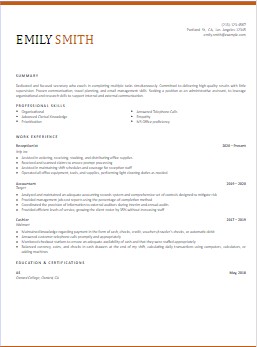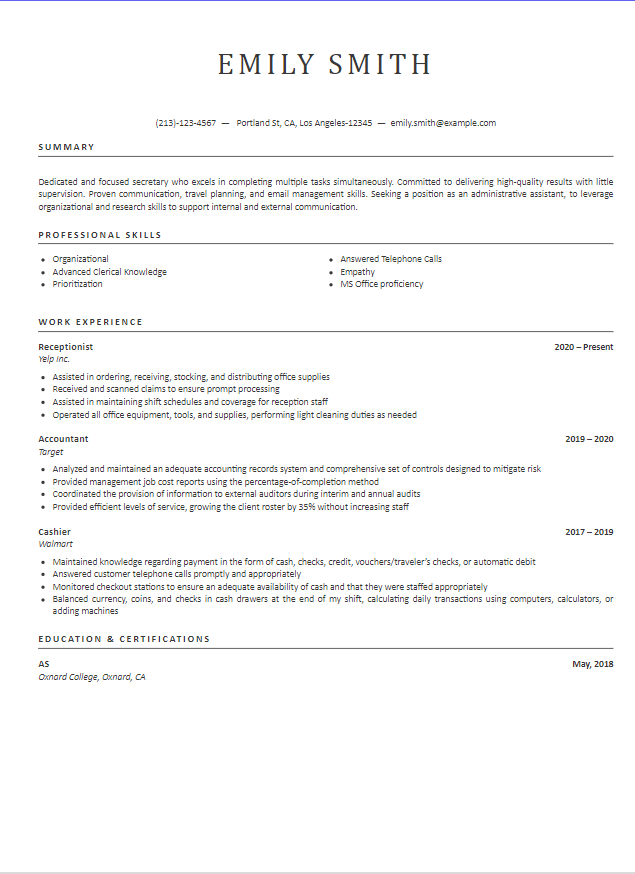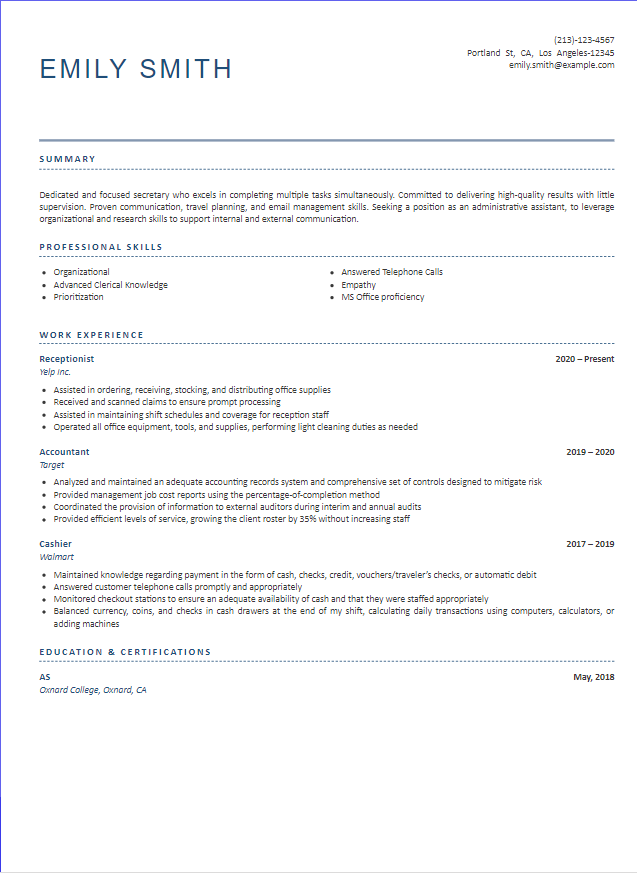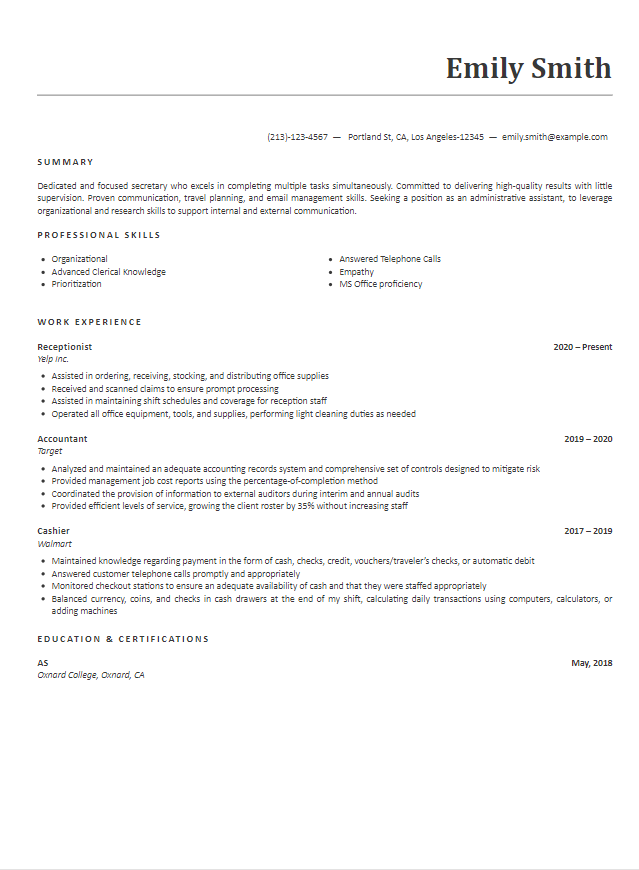Harvard Resume Templates
Harvard Resume Templates exemplify professionalism with clean layouts and clear headings, allowing individuals to highlight achievements effectively, aligning with Harvard’s commitment to excellence in career advancement.

Harvard Resume Template
Below are Best Examples For Harvard Resume Templates :-

Pisces
A bold blue header to showcase your boldness and effectiveness. A distinctive coolness to showcase while focusing on your experience.

Sagittarius
Formal, professional and focused – this is what this template helps you convey. Used by many professionals which have honed their skills over the time and want to move to the next level.

Virgo
A beautiful professional template which shows your business acumen while keeping it focused and professional.

Pacific
A very simple and a very effective resume template which is highly recommended for professionals which have a focused approach, a good work history with accomplishments and looking to make it big in the next move.
How To Use Harvard Resume Templates
Step 1
Choose a template for your resume.
Step 2
Fill the Asked Information in Our AI builder
Step 3
Download/ Email the Document Prepared by you.
Characteristics of Harvard Resume Template
Harvard does not officially endorse or provide specific resume templates. However, there are various styles and Resume formats that people might refer to as “Harvard resume templates” because they are commonly used by students and alumni of Harvard University or are based on preferences seen in job applications from individuals associated with Harvard. there are certainly some common characteristics and best practices followed by many successful Harvard graduates when crafting their resumes.
Here are some key points to remember:
Professionalism: Harvard resume templates emphasize a professional appearance and tone, reflecting the high standards associated with the institution.
Clarity and Conciseness: These templates prioritize clarity and conciseness, presenting information in a straightforward manner to ensure easy readability.
Education Focus: Given Harvard’s reputation as a prestigious academic institution, these templates often place a strong emphasis on education, highlighting academic achievements, degrees, and relevant coursework.
Relevant Experience: While education is important, Harvard resume templates also emphasize relevant work experience, internships, research projects, and extracurricular activities that demonstrate practical skills and accomplishments.
Achievements and Awards: Harvard resume templates frequently include sections dedicated to showcasing achievements, awards, honors, scholarships, and other distinctions to underscore the candidate’s exceptional accomplishments.
Clear Structure: These templates typically feature a clear and well-organized structure, with distinct sections for education, experience, skills, and other relevant information. Each section is carefully formatted to draw attention to the most important details.
Customization Potential: While adhering to certain conventions, Harvard resume templates allow for customization to suit individual preferences and specific job requirements. Candidates can adjust formatting, add or remove sections, and tailor content to highlight their unique strengths and qualifications.
Professional Fonts and Formatting: Harvard resume templates often use professional fonts and formatting styles, such as clear headings, bullet points, and consistent spacing, to enhance readability and visual appeal.
Overall, characteristics commonly associated with resumes from Harvard-affiliated individuals include professionalism, clarity, emphasis on education and relevant experience, achievements, clear structure, and potential for customization.
The Structure of Harvard Resume
Structure:
The structure of a resume associated with Harvard University typically follows a professional and organized format. While there’s no one-size-fits-all “Harvard resume,” the following is a common structure often seen in resumes from individuals affiliated with Harvard:
1. Header:
- Your full name, prominently displayed at the top of the page in a larger font size.
- Contact information, including your phone number, email address, and LinkedIn profile (optional).
- Optionally, you can include your address, but it’s not always necessary.
2. Summary (Optional):
- 2-4 sentences highlighting your value proposition for the targeted position.
- Focus on key skills, relevant experiences, and career aspirations.
- Quantify achievements where possible and tailor to the specific job description.
3. Education:
- Reverse chronological order, starting with your most recent degree.
- Include institution name, degree type, major/minor, graduation year, and any relevant honors (e.g., Dean’s List, Magna Cum Laude).
- For academic achievements, list relevant coursework, research projects, or publications.
- Consider including your GPA if it’s above 3.5.
4. Experience:
- Reverse chronological order, starting with your most recent experience.
- Include company name, job title, and dates of employment.
- For each role, use strong action verbs and bullet points to describe your responsibilities and achievements.
- Quantify results whenever possible (e.g., “Increased sales by 15%,” “Managed a team of 10 people”).
- Tailor your descriptions to the specific job requirements.
5. Skills:
- Separate section listing your relevant hard and soft skills.
- Organize skills by category (e.g., technical, analytical, communication).
- Prioritize skills most relevant to the targeted position.
- Use keywords from the job description to enhance visibility for applicant tracking systems (ATS).
6. Additional Sections (Optional):
- Awards & Honors: List academic awards, scholarships, or professional recognitions.
- Publications: Showcase any relevant research papers, articles, or other publications.
- Languages: Include languages you speak, read, and write with proficiency levels.
- Leadership Experience: Highlight leadership roles in student organizations, volunteer work, or clubs.
- Volunteer Work: Demonstrate your social responsibility and engagement with relevant causes.
Additionally you should take care of Content:
- Action verbs: Emphasize using strong action verbs to showcase your initiative and impact.
- Quantification: Whenever possible, quantify your achievements with numbers, percentages, or metrics.
- Tailoring: Tailor your content to each specific job you apply for.
- Proofreading: Proofread your resume meticulously for any grammatical or spelling errors.
The Format of Harvard Resume
Formatting a resume in the style often associated with individuals affiliated with Harvard University involves attention to detail, professionalism, and clarity. While there’s no strict template, here are some formatting tips commonly seen in Harvard-inspired resumes:
Consistent Font and Size:
- Use a professional, easy-to-read font such as Arial, Calibri, or Times New Roman.
- Maintain consistency in font size throughout the document, with larger sizes for section headings and slightly smaller sizes for body text.
Clear Section Headings:
- Use bold or slightly larger font sizes to distinguish section headings (e.g., “Education,” “Experience,” “Skills,” etc.).
- Consider using all capital letters or underlining to make section headings stand out.
Bullet Points for Clarity:
- Use bullet points to list achievements, responsibilities, and skills under each relevant section.
- Keep bullet points concise and action-oriented, starting each bullet point with a strong action verb.
Whitespace and Margins:
- Maintain adequate whitespace throughout the document to improve readability.
- Use one-inch margins on all sides to ensure sufficient space around the content.
Alignment and Formatting:
- Align text to the left for easy reading and a clean appearance.
- Use consistent formatting for dates, job titles, and other details (e.g., bold or italicize job titles, use consistent date formats).
Subtle Use of Color or Design Elements (Optional):
- While Harvard-inspired resumes typically lean towards a more traditional and conservative look, you may choose to add subtle color accents or design elements for visual interest.
- Avoid excessive use of color or overly decorative elements that may distract from the content.
Professional Header:
- Include your full name as the header of the resume, using a larger font size or bold formatting to make it stand out.
- Below your name, include your contact information, such as phone number, email address, and LinkedIn profile (optional).
Length:
- Aim to keep your resume to one or two pages, focusing on the most relevant and impactful information.
- Prioritize recent and relevant experiences, and avoid including unnecessary details or irrelevant information.
Consistency and Proofreading:
- Ensure consistency in formatting, spacing, and alignment throughout the document.
- Proofread your resume carefully to eliminate any typos, grammatical errors, or inconsistencies.
By following these formatting guidelines, you can create a professional and polished resume that reflects the high standards associated with Harvard University. Remember to tailor your resume to each specific job application and highlight your most relevant experiences and skills.
Additional Points:
- Research: Analyze sample resumes of successful individuals in your target field, regardless of their affiliation.
- Feedback: Seek feedback on your resume from career advisors, mentors, or trusted colleagues.
- University Resources: Utilize resources offered by your university’s career services department, even if not Harvard-specific.
- Online Templates: Consider free online templates that offer professional and modern designs.
- Dynamic Approach: While there’s no rigid “Harvard” format, focus on a structure and content that effectively showcases your unique qualifications for each targeted position.
Remember: The key to a strong resume lies in impactful content, not just the specific template. Focus on highlighting your achievements, skills, and experiences in a compelling and tailored manner to impress potential employers.
Mistakes to Avoid While Creating Harvard Resume
It’s important to avoid certain pitfalls to ensure your document is professional, effective, and aligns with high standards. Here are some common mistakes to avoid when creating a Harvard-style resume:
Overcrowding the Page:
- Avoid cramming too much information onto the page, which can make the resume difficult to read and overwhelming for the reader.
- Maintain adequate whitespace to improve readability and create a clean, organized appearance.
Using Unprofessional Fonts or Formatting:
- Avoid using decorative or overly stylized fonts that may detract from the professionalism of the document.
- Stick to standard, easy-to-read fonts such as Arial, Calibri, or Times New Roman, and maintain consistency in font size and formatting throughout the document.
Including Irrelevant Information:
- Focus on including only relevant and impactful information that directly relates to the job or field you’re applying for.
- Avoid including irrelevant work experiences, skills, or accomplishments that do not add value to your candidacy.
Exaggerating or Misrepresenting Experiences:
- Be honest and truthful in representing your experiences, skills, and accomplishments.
- Avoid exaggerating or embellishing your qualifications, as this can damage your credibility if discovered by employers.
Neglecting Proofreading and Editing:
- Carefully proofread your resume to eliminate typos, grammatical errors, and inconsistencies.
- Neglecting to proofread can create a negative impression and suggest a lack of attention to detail.
Using Generic Language or Clichés:
- Avoid using generic language or clichés that don’t add value to your resume and may make it less memorable.
- Instead, use specific, descriptive language to highlight your achievements and unique qualifications.
Failing to Tailor the Resume to the Job:
- Each resume should be customized to the specific job or field you’re applying for.
- Avoid using a one-size-fits-all approach and instead tailor your resume to highlight the most relevant experiences, skills, and accomplishments for each application.
Including Personal Information:
- Avoid including personal information such as age, marital status, or irrelevant hobbies on your resume.
- Focus on professional information that directly relates to your qualifications for the job.
Using an Unprofessional Email Address:
- Ensure that your email address is professional and appropriate for a job application.
- Avoid using unprofessional or outdated email addresses that may create a negative impression.
By avoiding these common mistakes, you can create a Harvard-style resume that effectively showcases your qualifications, professionalism, and attention to detail. Remember to review your resume carefully before submitting it for job applications to ensure it meets high standards and presents you in the best possible light.
Comprehensive Resume Guide
F A Q
Are Harvard Resume Templates Free?
If you’re a current student or alumnus, you have access to resources and assistance from Harvard’s Career Services. They might offer personalized help, workshops, and access to resume templates specifically designed for their career advising model. However, these resources often require affiliation with the university and might not be freely available to everyone.
What To Include In Harvard Resume?
Focus on crafting a document that highlights your:
1. Achievements: Showcase results and impact, not just responsibilities. Use strong action verbs and quantifiable measures (e.g., increased sales by 15%).
2. Relevant Skills: Highlight hard and soft skills aligned with the specific job you’re applying for. Tailor this section to each individual position description.
3. Tailored Content: Avoid a generic resume. Ensure each section, from experiences to skills, speaks directly to the requirements and values of the targeted position and institution.
4. Conciseness & Clarity: Keep it clear, concise, and ideally within 1-2 pages. Use clean formatting and headings for easy readability.
5. Proofreading: Meticulously proofread for grammar and spelling errors. A polished resume shows your professionalism and attention to detail.
Can I Include Extra Circular Activities In My Harvard Resume?
Yes, you should definitely include your extracurricular activities in your Harvard resume! In fact, showcasing your extracurricular involvement is highly encouraged, as it offers valuable insights.
Choose a few meaningful activities that best demonstrate your diverse interests, skills, and commitment, and ensure you describe them in a way that makes them relevant to your academic aspirations.
By presenting your extracurricular involvement strategically, you can significantly strengthen your application and showcase your potential as a valuable addition to the Harvard community.
Are Our resume templates word ATS Friendly?
While many websites provide a range of built-in and downloadable resume templates, not all of them prioritize compatibility with Applicant Tracking Systems (ATS). These systems are commonly used by companies to streamline the hiring process, but without ATS optimization, your carefully crafted resume might not even make it past the digital gatekeeper. Don’t let your masterpiece disappear into the digital void – ensure it’s ATS-friendly with our meticulously crafted templates.
